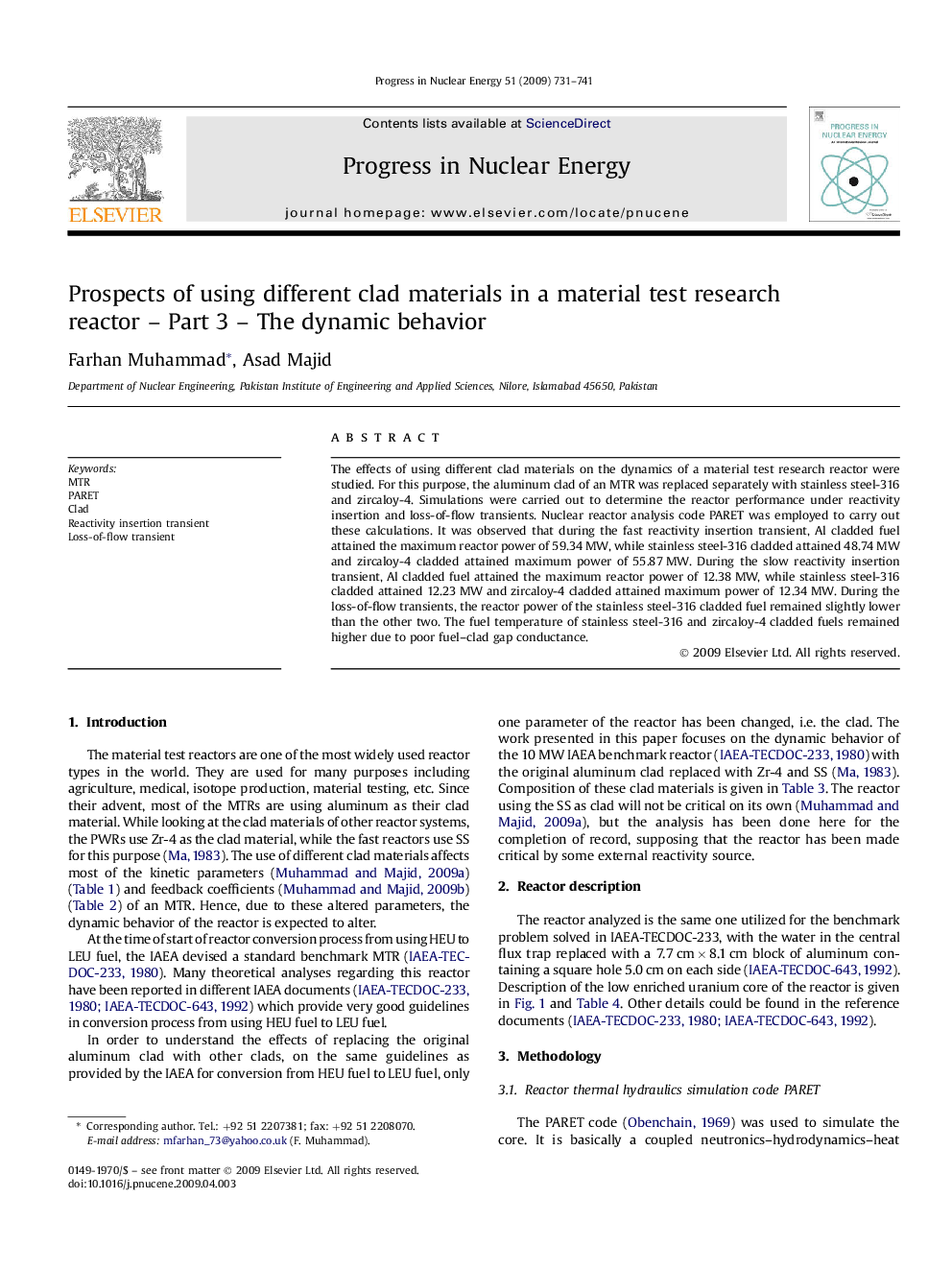| Article ID | Journal | Published Year | Pages | File Type |
|---|---|---|---|---|
| 1740996 | Progress in Nuclear Energy | 2009 | 11 Pages |
The effects of using different clad materials on the dynamics of a material test research reactor were studied. For this purpose, the aluminum clad of an MTR was replaced separately with stainless steel-316 and zircaloy-4. Simulations were carried out to determine the reactor performance under reactivity insertion and loss-of-flow transients. Nuclear reactor analysis code PARET was employed to carry out these calculations. It was observed that during the fast reactivity insertion transient, Al cladded fuel attained the maximum reactor power of 59.34 MW, while stainless steel-316 cladded attained 48.74 MW and zircaloy-4 cladded attained maximum power of 55.87 MW. During the slow reactivity insertion transient, Al cladded fuel attained the maximum reactor power of 12.38 MW, while stainless steel-316 cladded attained 12.23 MW and zircaloy-4 cladded attained maximum power of 12.34 MW. During the loss-of-flow transients, the reactor power of the stainless steel-316 cladded fuel remained slightly lower than the other two. The fuel temperature of stainless steel-316 and zircaloy-4 cladded fuels remained higher due to poor fuel–clad gap conductance.
